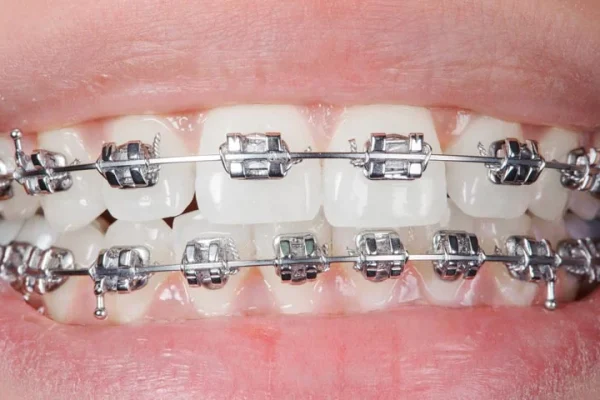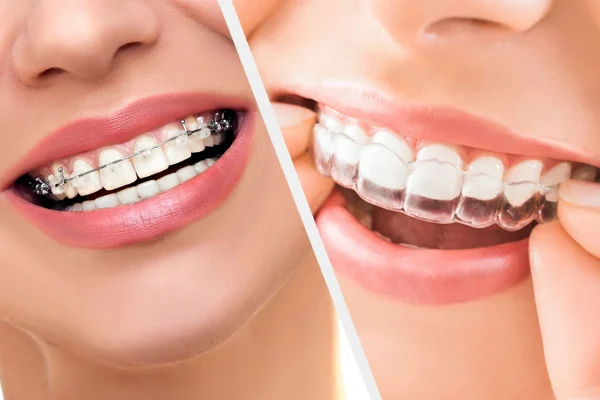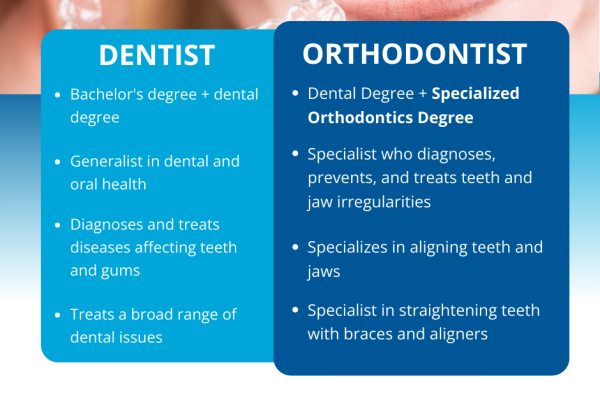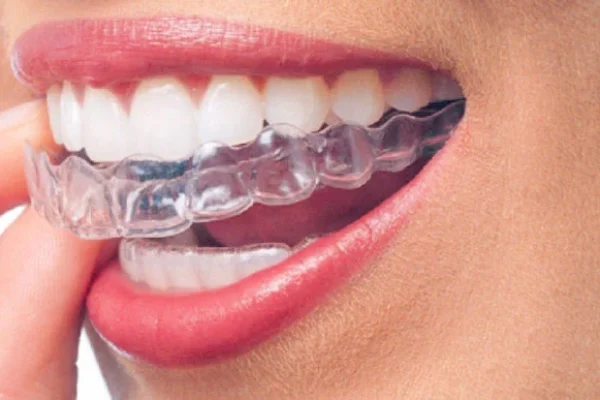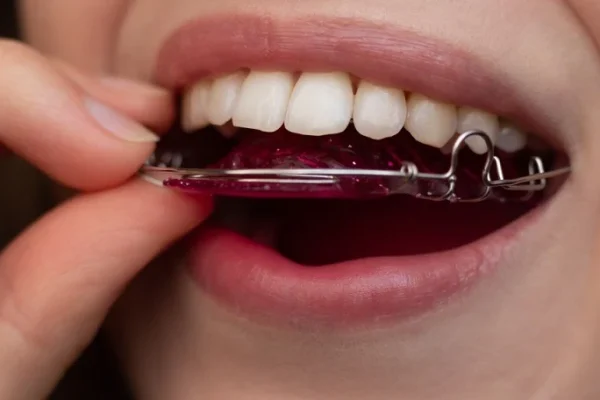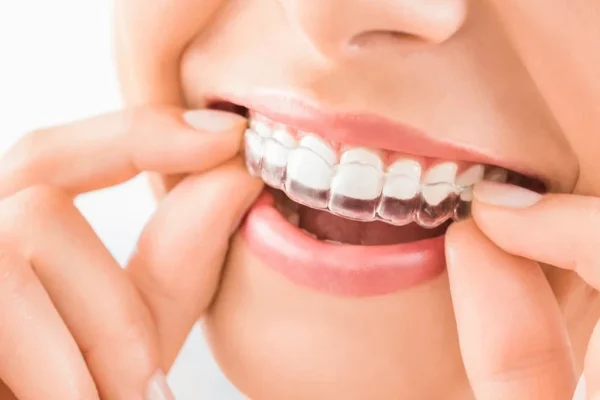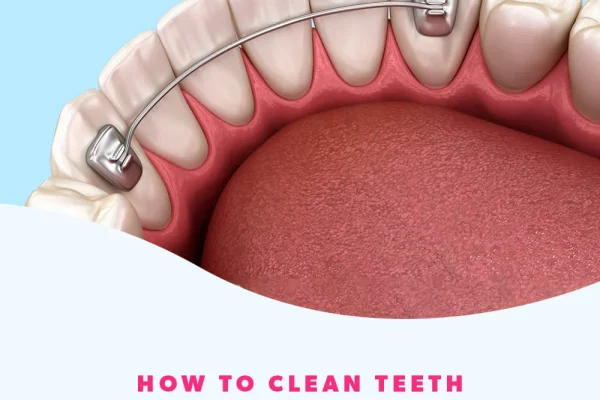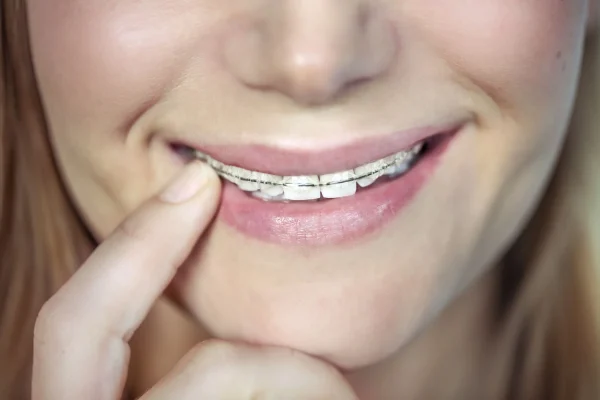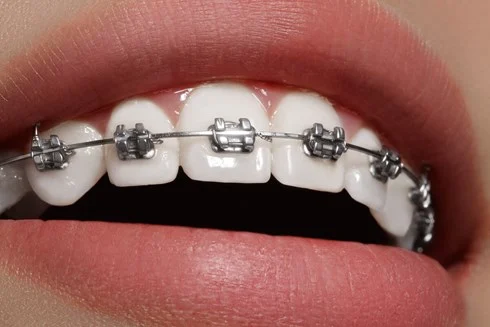
Table of Contents
ToggleKey Takeaways
-
- NHS braces are typically free for under-18s with qualifying clinical need; adult NHS treatment is very rare.
-
- Private braces range widely, from approximately £2,000 to over £10,000, depending on complexity and brace type.
-
- Brace types vary in cost: Metal braces (from ~£2,195) are most affordable; ceramic braces (from ~£2,395) offer aesthetics; lingual braces and clear aligners (like Invisalign) are premium options (£2,500 – £10,000+).
-
- Location matters: Expect potentially higher costs in London compared to other UK regions.
- Flexible payment plans are common, including interest-free monthly instalments and third-party finance options.
Cost of braces UK: Your Complete 2025 Price Guide
Navigating the world of orthodontics can feel like stepping into a complex maze, especially when it comes to the financial side. The cost of braces uk isn’t a simple, one-size-fits-all figure. It’s a dynamic number influenced by a symphony of factors – the type of appliance you choose, the complexity of your dental realignment needs, the duration of your treatment, the geographical location of your chosen clinic (yes, London often plays by its own rules), and the specific expertise of the orthodontist orchestrating your smile transformation. This guide is designed to be your compass, leading you through the various cost structures you’ll encounter in 2025. We’ll dissect the differences between private and NHS routes, explore the price spectrum of various brace types – from traditional metalwork to cutting-edge clear aligners – and delve into why these treatments command the prices they do. Furthermore, we’ll illuminate the payment pathways available, because investing in your smile shouldn’t necessitate breaking the bank in one go. Understanding the braces price uk landscape empowers you to make informed decisions, ask the right questions during consultations, and budget effectively for a treatment that can genuinely change not just your smile, but your confidence too. Let’s demystify the braces uk price together, providing clarity and comprehensive insights for your 2025 planning. We aim to cover everything from the average outlay to specific regional variations and financing options, ensuring you have a robust understanding before you even step into a clinic.
What is the General cost of braces uk for Private Treatment?
When you step outside the specific criteria of the NHS, you enter the realm of private orthodontic treatment. This is the most common route for adults seeking braces, or for younger patients who don’t meet the NHS threshold for clinical need but still desire cosmetic or functional improvements. The general cost of braces uk within the private sector presents a significantly wider range compared to the fixed (or often free) NHS structure. Typically, you might be looking at figures starting from around £2,000 and potentially soaring upwards of £10,000, depending heavily on the specifics of your case and chosen treatment method. Think of this range as a broad landscape; your individual quote will be a pinpointed location within it. Why such variation? Several key factors are at play. Firstly, the complexity of your orthodontic needs is paramount. Simple alignment adjustments will naturally cost less than correcting severe bite issues or heavily crowded teeth. Secondly, the duration of treatment matters; longer treatment inherently involves more appointments, adjustments, and monitoring, thus increasing the cost. Thirdly, the type of brace itself is a major determinant – we’ll explore this in more detail shortly, but discreet options like lingual braces or clear aligners generally sit at the higher end. Finally, the orthodontist’s experience and the clinic’s location contribute; prestigious clinics in major cities like London might have higher overheads and charge accordingly. This private braces cost uk usually encompasses the entire treatment package: initial consultations, diagnostic records (like X-rays and moulds), the braces themselves, all adjustment appointments, and often, the first set of retainers needed post-treatment. Always clarify precisely what’s included in your quoted fee.
How Much Do Different Types of Braces Cost Privately in the UK?
Once you’ve decided on private treatment, the next significant factor dictating the cost of braces uk is the type of appliance you opt for. The days of one-style-fits-all are long gone; modern orthodontics offers a diverse menu of options, each with its own aesthetic profile, functional mechanism, and, crucially, price point. Choosing the right type involves balancing your budget, cosmetic preferences, lifestyle, and the clinical recommendations of your orthodontist. Generally, the more visible and traditional the brace, the lower the cost tends to be, while more discreet or technologically advanced options command a premium. Let’s break down the common contenders available in UK private practices: traditional metal braces, their tooth-coloured ceramic cousins, hidden lingual braces placed behind the teeth, and the ever-popular clear aligner systems like Invisalign. Each comes with pros and cons extending beyond just the braces price uk. Understanding these differences is key to selecting a treatment that aligns not only your teeth but also your expectations and financial planning. We’ll delve into the specific cost ranges for each, giving you a clearer picture of how your choice of hardware impacts the overall investment required for your straighter smile. Remember, the figures discussed are typical starting points or ranges, and your personalised quote following a consultation will provide the definitive cost for your unique situation.
What is the Starting Price for Metal Braces in the UK?
Traditional metal braces, often the image that springs to mind when thinking of orthodontics, remain a highly effective and widely used option. Their cost of braces uk generally represents the most budget-friendly entry point into private orthodontic treatment. You’ll often see starting prices advertised from around £2,195, although the final figure can climb depending on the complexity and duration needed for your specific case, potentially reaching £3,500 or more for comprehensive treatment on both arches. Why are they typically cheaper? The materials – high-grade stainless steel brackets and wires – are relatively cost-effective to manufacture compared to ceramics or custom-made aligners. The technology is well-established and familiar to orthodontists worldwide. While they might not win prizes for subtlety, their visibility is offset by their robustness and efficiency. Metal braces are true workhorses, capable of tackling even the most challenging orthodontic problems, including severe crowding, significant bite discrepancies, and complex tooth movements that might be more difficult for other systems. Their strength allows orthodontists to apply precise forces effectively, often leading to predictable and excellent results. For patients prioritising function and cost-effectiveness over aesthetics, traditional metal braces offer a compelling value proposition. They are durable, less prone to breakage than ceramic options, and don’t require the strict compliance regime of removable aligners. The braces price uk for metal options makes comprehensive orthodontic correction accessible to a broader range of private patients.
What is the Typical Price for Ceramic Braces in the UK?
For those seeking a less conspicuous option than traditional metal but perhaps finding clear aligners or lingual braces outside their budget, ceramic braces present an excellent middle ground. The cost of braces uk for ceramic options typically starts higher than metal, often advertised from £2,395, and can range up to £4,500 or more for full treatment. The key appeal lies in their aesthetics. The brackets are made from a translucent or tooth-coloured ceramic material that blends in much better with your natural teeth, making them significantly less noticeable than their metallic counterparts. Often, a tooth-coloured or frosted wire can also be used to further enhance the discreet appearance. This makes them a popular choice, particularly among adult patients who might feel self-conscious about wearing highly visible braces in professional or social settings. While offering a cosmetic advantage, ceramic braces function very similarly to metal braces, using the same bracket-and-wire system to apply gentle, continuous pressure to move teeth. They are effective for treating a wide range of orthodontic issues. However, the ceramic material, while strong, can be slightly more brittle than metal, potentially leading to a higher chance of bracket fracture if subjected to excessive force (like biting into very hard foods). They can also sometimes cause slightly more friction against the wire, which might marginally extend treatment time in some complex cases, subtly influencing the final braces cost uk. Furthermore, the clear or tooth-coloured elastic ties used with some ceramic systems can be prone to staining from certain foods and drinks (like coffee, tea, red wine, or curry), requiring mindful dietary habits or more frequent tie changes.
How Much Do More Discreet Options Like Lingual Braces or Clear Aligners Cost UK?
Entering the premium tier of orthodontic treatment, we find options designed for maximum discretion: lingual braces and clear aligners. These advanced systems carry the highest cost of braces uk, reflecting their sophisticated technology, customisation, and aesthetic appeal. Lingual braces are essentially metal braces fixed to the back (lingual side) of your teeth, making them virtually invisible from the front. This complete concealment is their primary advantage. However, the process of creating and fitting them is technically demanding for the orthodontist, requiring specialised training, and the custom-made brackets contribute significantly to the cost. Prices for lingual braces often start around £4,000 and can easily exceed £10,000 for complex cases involving both upper and lower arches. Clear aligners, with Invisalign being the most recognised brand, consist of a series of custom-made, transparent plastic trays that fit snugly over your teeth. Each tray is worn for about 1-2 weeks before progressing to the next, gradually shifting the teeth into alignment. Their near-invisibility and removability (for eating, drinking, and cleaning) make them exceptionally popular. The braces price uk for clear aligners typically ranges from £2,500 for simpler cases (e.g., Invisalign Lite or Express) up to £6,000 or more for comprehensive treatment. The cost is driven by the advanced 3D imaging and manufacturing process required to create the personalised series of aligners, as well as the brand equity and ongoing research and development associated with systems like Invisalign. Both lingual braces and clear aligners offer fantastic aesthetic benefits, driving their higher position on the braces cost uk spectrum.
How Much Do Adult Braces Cost UK Specifically?
The quest for a perfect smile isn’t exclusive to teenagers. Increasingly, adults are embracing orthodontic treatment, seeking to correct long-standing issues or address changes that have occurred over time. When considering adult braces cost uk, it’s crucial to understand that adult treatment almost invariably falls under the private sector. NHS orthodontic treatment for adults is extremely rare, reserved only for severe medical or dental health reasons, not cosmetic alignment. Therefore, the costs associated with adult braces align directly with the private treatment price ranges we’ve already discussed. Queries like ‘how much do braces cost uk over 18‘ essentially translate to asking about private braces price uk. While the core costs are determined by the type of brace chosen (metal, ceramic, lingual, aligners) and the complexity of the case, there can sometimes be subtle differences in adult treatment that might influence the final figure. Adults may present with different challenges, such as pre-existing dental work (crowns, bridges), gum health considerations, or slower physiological responses to tooth movement compared to adolescents. This can occasionally mean slightly longer treatment times, potentially nudging the overall cost higher. However, the primary driver remains the chosen appliance. Adults often prioritise discretion, leaning towards ceramic braces, clear aligners, or lingual braces, which, as detailed earlier, occupy the mid-to-high end of the cost of braces uk spectrum. Conversely, an adult opting for traditional metal braces for maximum efficiency might find their costs comparable to or even less than a teenager undergoing complex treatment with the same system. Ultimately, the adult braces cost uk is determined by individual needs and choices within the private fee structure.
What Is The Average Price For Braces In The UK?
Pinning down a single “average” cost of braces uk is inherently tricky due to the wide range of variables involved, but it’s a question many prospective patients ask to get a general ballpark figure. Based on the typical costs of the various private treatment options available, a reasonable estimate for the average price for braces in the UK would likely fall somewhere between £3,000 and £5,500. This figure attempts to balance the lower cost of traditional metal braces with the higher prices of ceramic, lingual, and clear aligner systems, which are increasingly popular, especially among adult patients. It’s vital, however, to treat this average with caution. It’s merely a midpoint in a very broad spectrum. Simple cases treated with metal braces might cost significantly less, while complex treatments using top-tier discreet options like lingual braces could easily double this average. Factors contributing to this average include the blend of different brace types chosen by patients across the country, regional variations in pricing (with London and the South East often skewing higher), and the varying levels of complexity orthodontists encounter. This average braces price uk generally reflects the cost of a full course of treatment, covering both upper and lower arches where necessary, and including the standard appointments and initial retainers. It doesn’t typically account for potential extras like replacement retainers down the line, specialised cleaning aids, or treatment for unforeseen complications. Use this average figure as a preliminary guide, but always seek personalised quotes from several clinics to understand the specific cost of braces uk for your individual needs and desired treatment type.
How Much Do Braces Cost In London UK Compared to Other Regions?
It’s a well-observed phenomenon across many sectors: costs in London tend to be higher than elsewhere in the UK. Orthodontic treatment is often no exception. When specifically researching ‘Braces Cost In London‘ or ‘How Much Do Braces Cost In London UK?‘, you should generally anticipate figures potentially sitting at the higher end of the national ranges, or perhaps even exceeding them slightly. While a course of metal braces might start from £2,195 nationally, the entry point in a central London clinic could be noticeably higher. Similarly, the upper limits for premium options like Invisalign or lingual braces might stretch further in the capital. Why the disparity? Several factors contribute to the elevated Cost Of Braces In London, UK. Prime among them are the significantly higher operational overheads. Rent for clinic space in desirable London locations is substantially more expensive than in smaller towns or cities. Staff salaries may also need to be higher to attract talent in a competitive market. Furthermore, clinics in London might invest heavily in cutting-edge technology and luxurious patient environments, costs which are inevitably reflected in their fees. Demand also plays a role; a high density of population and professionals willing to invest in cosmetic treatments can support higher pricing structures. While you can certainly find clinics offering competitive braces price uk deals even within London, particularly in outer boroughs, the general trend points towards a ‘London premium’. Patients outside the capital, particularly in the North of England, Scotland, Wales, or Northern Ireland (like those served by practices such as Mulgrew Orthodontics), may find identical treatments offered at a lower overall cost of braces uk.
How Much Do Braces Cost in the UK via the NHS?
The National Health Service (NHS) offers a pathway for orthodontic treatment, but it’s important to understand its specific scope and cost structure, which differs markedly from private care. For eligible patients, the cost of braces uk via the NHS can be significantly lower, or even free. The primary group benefiting from NHS orthodontics is individuals under the age of 18 who have a clear clinical need for treatment. Eligibility isn’t automatic; assessment is based on a national standard called the Index of Orthodontic Treatment Need (IOTN). This index grades dental health issues (like severe crowding, impacted teeth, significant bite problems) on a scale. Generally, only those scoring a grade 4 or 5 (indicating a greater need) qualify for NHS funding. For these qualifying under-18s, the entire course of NHS orthodontic treatment, which usually involves traditional metal braces, is typically provided free of charge. Asking ‘How much do braces cost in the UK NHS?‘ for this group yields the welcome answer of £0 for the braces themselves. However, it’s worth noting that standard NHS dental charges might still apply for the initial assessment appointment or any unrelated general dental work needed, unless the patient is exempt from charges for other reasons (e.g., low income). For adults (over 18), accessing NHS orthodontic treatment is exceptionally difficult. It’s usually reserved for very severe problems where alignment issues significantly impact jaw function or overall dental health, often requiring連携 with hospital services. Cosmetic alignment alone does not qualify adults for NHS braces. Therefore, for the vast majority of adults considering braces, the relevant braces cost uk will be the private fees discussed earlier, as the NHS route is typically not an option.
Why Are Braces So Expensive in the UK?
The question ‘Why are braces so expensive in UK?‘ is a common one, often asked with a degree of sticker shock after receiving a private treatment quote. While the cost of braces uk can seem high, it reflects a combination of highly specialised skills, advanced materials, lengthy treatment times, and significant operational expenses. Firstly, orthodontics is a specialised field of dentistry. An orthodontist undertakes several years of additional full-time postgraduate training after qualifying as a general dentist. This extensive education and expertise in diagnosing, planning, and executing complex tooth movements command a professional fee commensurate with their skill level. You’re paying for their expert judgment and ability to achieve the desired results safely and effectively. Secondly, the materials and technology involved aren’t cheap. Whether it’s high-grade stainless steel, aesthetic ceramic brackets, custom-fabricated lingual appliances, or the sophisticated 3D scanning and manufacturing processes behind clear aligners, these components represent a significant cost. Add to this the diagnostic tools like digital X-rays and 3D imaging systems. Thirdly, orthodontic treatment is not a quick fix. It typically spans months or even years, involving numerous appointments for adjustments, monitoring progress, and eventually, retainer fitting. This long-term clinical time commitment is factored into the overall braces price uk. Fourthly, running a modern orthodontic practice involves substantial clinic overheads. This includes rent or property costs (especially high in areas like London), salaries for skilled support staff (nurses, receptionists, technicians), investment in and maintenance of specialised equipment, insurance, and regulatory compliance costs. Finally, many treatments involve laboratory fees. Custom appliances like retainers, lingual braces, or aligners are often fabricated by external dental laboratories, adding another layer to the cost of braces uk. When all these elements are combined, the seemingly high price begins to make more sense as an investment in specialised, long-term healthcare using advanced materials and technology.
What Payment Options Are Available for Braces in the UK?
Understanding the significant investment required for the cost of braces uk, especially in the private sector, most orthodontic clinics recognise the need for flexible payment solutions. While paying the entire fee upfront might be an option (sometimes attracting a small discount), it’s not feasible for everyone. Thankfully, various financing routes are commonly available to make treatment more accessible. The goal is to spread the braces price uk over a manageable period, aligning the payments with your budget. Before committing to treatment, it’s essential to have a clear discussion with your chosen clinic about their specific payment plans and any third-party finance options they partner with. Ensure you understand the total cost, the deposit required, the repayment schedule, and critically, whether any interest charges apply. Many practices are adept at helping patients navigate these financial aspects, offering transparency and support. Common options include interest-free instalments paid directly to the clinic over the course of treatment, or longer-term finance plans arranged through external credit providers, which may involve interest. Exploring these possibilities thoroughly allows patients to proceed with their desired orthodontic treatment without undue financial strain, making that dream smile a more achievable reality. Let’s look at the specifics of monthly payments and deferred options.
Can I Pay Monthly for Braces UK?
Yes, absolutely. The option to pay monthly for braces UK is one of the most common and popular ways patients manage the private cost of braces uk. Most private orthodontic clinics offer in-house payment plans specifically designed to spread the cost over the duration of your treatment, and sometimes even beyond. Typically, how it works is you’ll pay an initial deposit upfront – this amount can vary but might be somewhere between 10% and 30% of the total treatment fee. The remaining balance is then divided into equal, interest-free monthly instalments paid directly to the clinic via direct debit or standing order. The repayment period often aligns with your estimated treatment time, which could be anywhere from 12 to 24 months, or sometimes longer for very complex cases. For example, seeing offers like ‘Braces cost £118/month over 24 months‘ (as referenced from competitor data, likely after a deposit) illustrates this model clearly. Many clinics actively promote ‘Interest-Free Payment Plans‘ (again, referencing competitor examples like Trinity House Orthodontics) as a key benefit. This approach makes budgeting much easier, transforming a large one-off expense into predictable, manageable monthly outgoings. It’s a straightforward and transparent way to finance your treatment without incurring additional interest charges, provided you adhere to the agreed schedule. Always confirm the exact terms – deposit amount, monthly payment figure, number of instalments, and the interest-free nature – directly with your chosen clinic before starting treatment. This is often the most accessible route to affording the desired braces uk price.
Can I Get Braces and Pay Later? Exploring Deferred Payment & Finance
The question ‘Can I get braces and pay later?‘ delves into options that might extend repayment beyond the typical interest-free plans offered directly by clinics, or potentially involve formal credit agreements. While most clinics’ standard monthly plans involve paying during the treatment period, ‘paying later’ in a broader sense can be achieved through a couple of routes. Firstly, some clinics partner with third-party dental finance providers. These companies specialise in offering loans specifically for dental and orthodontic treatments. Through such partnerships, patients might be able to access longer repayment terms, potentially stretching over 3, 4, or even 5 years, thus significantly lowering the monthly payment amount compared to shorter, in-house plans. However, these external finance agreements are essentially personal loans. They will almost certainly involve a formal credit check, and crucially, they often come with interest charges, especially for repayment periods extending beyond 12 or sometimes 24 months. The Annual Percentage Rate (APR) can vary, so it’s vital to understand the total amount repayable, including all interest, before signing up. This route truly allows you to ‘pay later’, well after the treatment might be complete, but at an additional cost due to interest. Secondly, some clinics might offer slightly more flexible in-house plans with deferred start dates for payments, although truly ‘buy now, pay much later’ schemes without external credit are less common for the full cost of braces uk. Always scrutinise the terms and conditions carefully, compare the total cost including interest against interest-free options, and ensure the repayments are comfortably affordable within your long-term budget before committing to any deferred payment or external finance plan.
Frequently Asked Questions About ‘cost of braces uk’
Navigating the financial aspects of orthodontic treatment often sparks numerous questions. We’ve covered a lot of ground, but some queries pop up time and again. This section aims to provide concise answers to some of the most frequently asked questions regarding the cost of braces uk, consolidating key information for quick reference. Whether you’re wondering about the baseline private costs, the specifics for adults, the NHS pathway, average figures, or payment flexibility, we’ll recap the essential points here. Remember, while these answers provide general guidance based on typical UK scenarios in 2025, your individual circumstances and chosen clinic will ultimately determine the precise figures and options available to you. Think of this as a final checklist to ensure you’ve grasped the core financial considerations before taking the next step towards your orthodontic journey. Getting clarity on the braces price uk is crucial for confident decision-making, and addressing these common points directly should help solidify your understanding and prepare you for consultations with potential providers. Let’s revisit the most pressing cost-related questions.
What is the General cost of braces uk for Private Treatment?
Recapping the landscape of private orthodontic care, the general cost of braces uk exhibits a broad range, heavily influenced by individual factors. As NHS treatment is restricted, particularly for adults and cosmetic cases, private care is the most common pathway. Expect the financial commitment to start from approximately £2,000 for simpler cases using traditional metal braces. However, this figure represents the lower boundary. For more comprehensive treatments, involving both upper and lower teeth, or addressing more complex alignment and bite issues, the cost naturally increases. When considering more aesthetically pleasing options like ceramic braces, the starting point nudges higher, often from around £2,400. For the most discreet systems, such as custom-made lingual braces (fitted behind the teeth) or popular clear aligner systems (like Invisalign), the investment climbs substantially, potentially starting from £2,500-£4,000 and reaching £6,000 to £10,000 or even more for intricate, lengthy treatments. Key variables determining your specific quote within this wide spectrum include: the severity of your orthodontic problem, the estimated duration of treatment, the type of brace you and your orthodontist select, the specific expertise and reputation of the clinician, and the geographic location of the practice (with costs generally higher in London and the South East). Your quoted braces cost uk should ideally be all-inclusive, covering consultations, records, the appliance itself, all adjustment visits, and the initial set of retainers. Always confirm the specifics of what’s included to avoid unexpected expenses down the line. Understanding this range and the influencing factors is the first step in budgeting for private treatment.
How Much Do Adult Braces Cost UK Specifically?
When adults (typically defined as those over 18) seek orthodontic treatment in the UK, they are almost exclusively looking at private care options, as NHS funding for adult braces is highly restricted to severe clinical cases. Therefore, the question ‘how much do adult braces cost uk‘ essentially mirrors the discussion about general private braces price uk. The costs are dictated primarily by the type of appliance chosen and the complexity of the required tooth movement, rather than the patient’s age per se. Adults frequently prioritise discretion, often favouring ceramic braces (starting around £2,400+), clear aligners like Invisalign (ranging £2,500 – £6,000+), or lingual braces (starting £4,000+, potentially exceeding £10,000). If an adult opts for traditional metal braces for reasons of cost-effectiveness or clinical suitability, their cost of braces uk would align with the lower end of the private spectrum, likely starting from £2,000-£2,200+. While age itself isn’t the main cost driver, adult cases might sometimes present unique factors influencing treatment complexity or duration – such as existing dental restorations, potential gum health considerations, or slightly slower biological response times – which could indirectly affect the final fee. However, the core message remains: adult braces cost uk falls within the established private fee structures, heavily dependent on the chosen method. Budgeting should be based on the price range associated with the preferred type of brace, anticipating costs potentially from £2,000 up to £10,000+ depending on the selection and individual needs.
How Much Do Braces Cost in the UK via the NHS?
The cost of braces uk through the National Health Service (NHS) operates under a very different framework compared to private treatment. For the primary beneficiaries – children and adolescents under 18 with a demonstrable clinical need – NHS orthodontic treatment can be remarkably affordable, often entirely free. Eligibility is determined using the Index of Orthodontic Treatment Need (IOTN), a standardised assessment grading the severity of dental health issues related to tooth alignment and bite. Only those scoring high enough (typically grades 4 and 5) qualify for funded treatment. For these qualifying under-18s, the braces themselves (usually traditional metal ones) and the full course of treatment are provided at no charge. It’s essential to note that while the orthodontic treatment itself is free, standard NHS dental patient charges might apply for the initial assessment appointment or any unrelated dental procedures, unless the patient holds an exemption certificate (e.g., due to low income or certain benefits). In stark contrast, NHS orthodontic treatment for adults (over 18) is exceptionally rare. It is generally only considered in severe cases where malocclusion significantly impacts function or health, often requiring hospital-based multidisciplinary care. Cosmetic alignment is not covered. Therefore, when adults ask ‘How much do braces cost in the UK NHS?‘, the practical answer for almost all cases is that NHS treatment is not an available option, directing them towards private care and its associated braces cost uk.
What Is The Average Price For Braces In The UK?
Trying to establish an average price for braces in the UK provides a useful, albeit generalised, financial benchmark for prospective patients. Considering the diverse range of treatment options and complexities seen across the country, a realistic estimated average for a full course of private orthodontic treatment likely falls within the £3,000 to £5,500 bracket for 2025. This figure represents a midpoint, attempting to balance the costs across different types of braces and varying treatment lengths. It factors in that while traditional metal braces offer a lower starting point (around £2,200+), many patients, especially adults, opt for more expensive aesthetic options like ceramic braces (£2,400+), clear aligners (£2,500-£6,000+), or even premium lingual braces (£4,000-£10,000+). The increasing popularity of these mid-to-high range options pulls the overall average upwards. This average cost of braces uk generally assumes treatment on both upper and lower arches and includes the standard package of care: consultations, appliances, adjustments, and initial retainers. However, it’s crucial to remember this is just an average. Simple cases using basic braces will be below this range, while complex treatments with high-end appliances in premium locations (like central London) could significantly exceed it. Use this average braces price uk as a rough guide, but always rely on personalised quotes from specific clinics for accurate financial planning for your own treatment needs.
Can I Pay Monthly for Braces UK?
Yes, the ability to pay monthly for braces UK is a standard and widely available feature within the private orthodontic sector, designed to make the treatment more financially manageable. Most private clinics understand that the upfront cost of braces uk can be substantial, so they offer structured payment plans. The most common model involves paying an initial deposit (often between 10-30% of the total fee) at the start of treatment. The remaining balance is then divided into equal, interest-free instalments spread typically over the anticipated duration of your treatment – commonly ranging from 12 to 24 months, though sometimes longer periods are available, especially for extended treatments. These monthly payments are usually collected via direct debit or standing order. Many clinics explicitly advertise these schemes, highlighting ‘Interest-Free Payment Plans‘ as a key benefit, making the braces price uk accessible without incurring additional borrowing costs. Seeing specific examples like ‘Braces cost £118/month over 24 months‘ (after a likely deposit) helps illustrate how this works in practice. This allows patients to budget effectively, incorporating the cost into their regular monthly outgoings. While this is the norm, some clinics might also partner with third-party finance companies offering longer repayment terms (potentially 3-5 years), which could lower the monthly amount further but would likely involve credit checks and interest charges (APR). Always confirm the specific deposit requirements, instalment amounts, repayment period, and whether interest applies directly with your chosen clinic.





